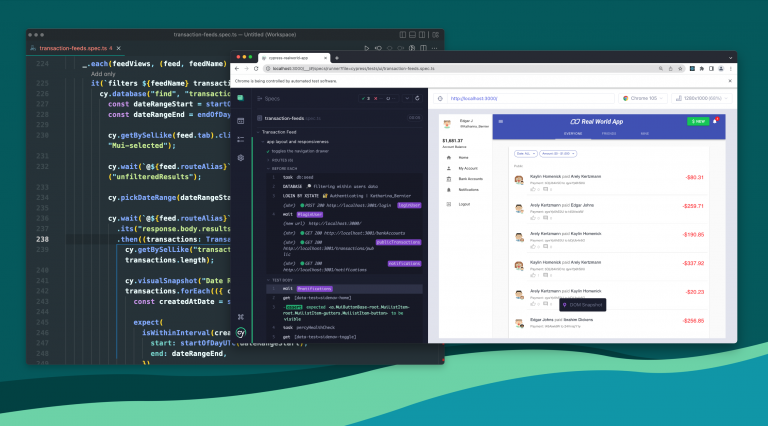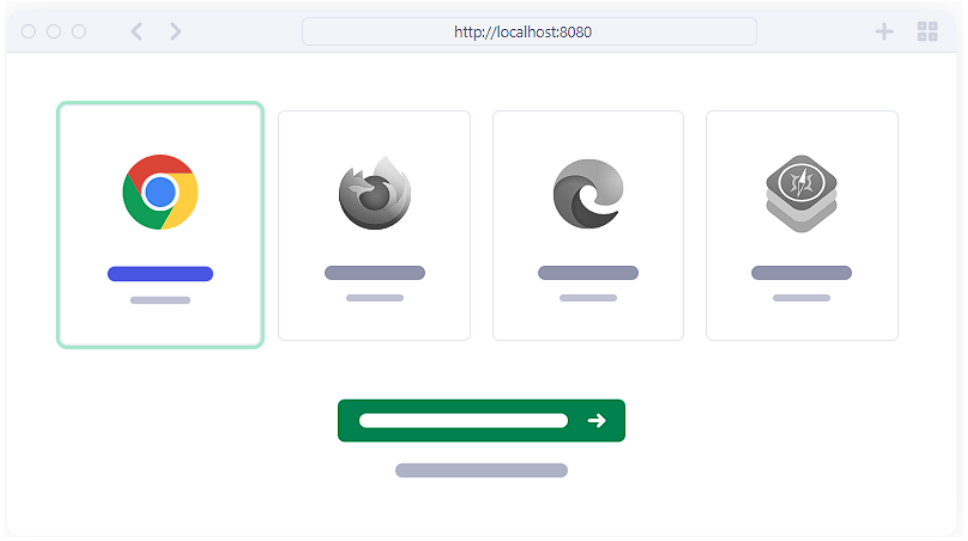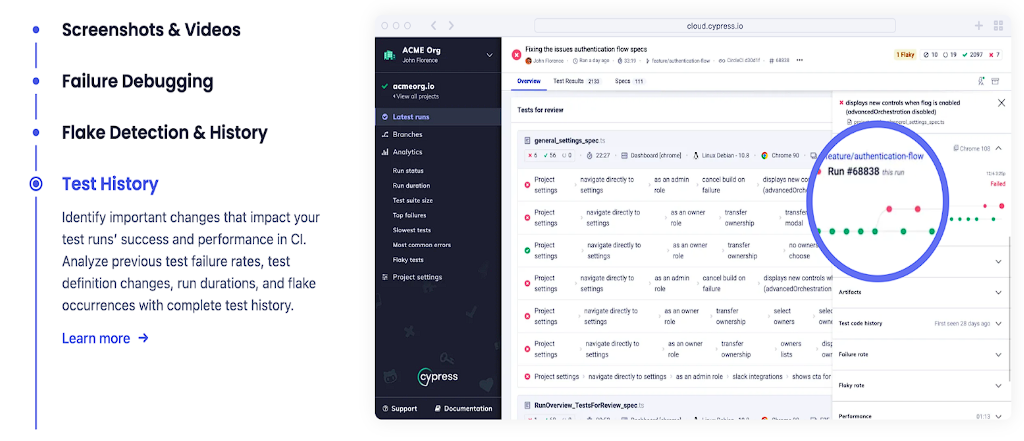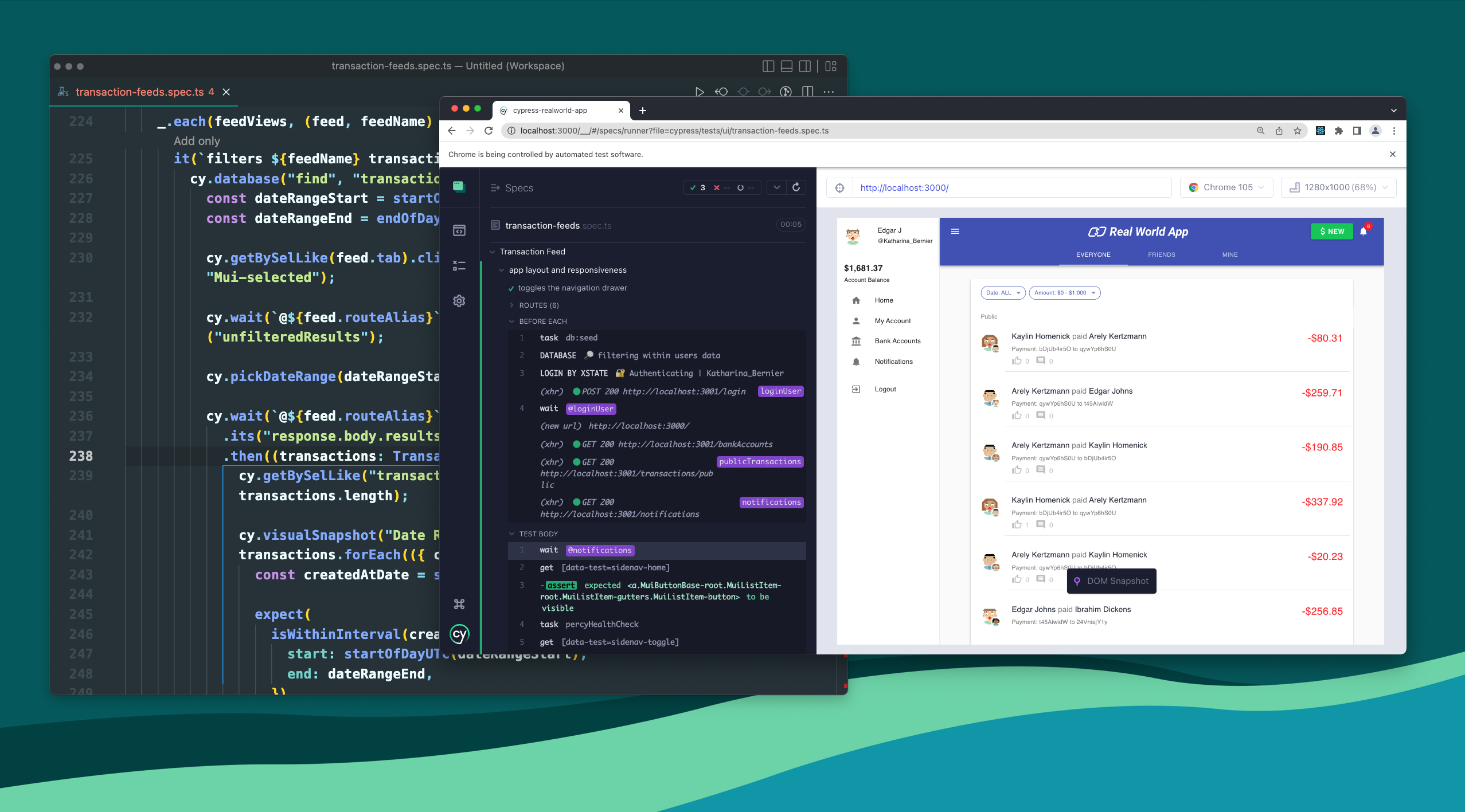Cypress - An End-to-End Automation Testing Tool

Automation testing is becoming more important every day. Developers are constantly searching for tools that can make testing simpler, more productive, and more successful. Setting up an automatic testing process with unit testing, test scripts, and test suites is tough. And manually testing software can be time consuming and prone to human error.
Enter Cypress – a powerful automation testing framework designed especially for the modern web. Developers love using Cypress because it’s user-friendly, has powerful testing capabilities, and offers a wide range of features. It helps developers automate their testing and catch bugs early on in the software development process.
What makes Cypress stand out from other testing frameworks is its unique architecture. Cypress works directly in your browser. This special approach allows developers to see and control their automated tests like – functional tests, exploratory testing, and regression tests.
On the other hand, traditional testing frameworks:
- run tests separately from the browser
- ask you to use other tools to interact
- don’t make it easy to run automation tests
This blog talks about what Cypress does and its helpful features. It will show how your development teams can boost test coverage and improve results by partnering with Total Performance Consulting (TPC) to run automation tests with Cypress.
More specifically, we’ll explore the following topics:
- What is Cypress
- Platforms supported by Cypress
- What is the purpose of Cypress
- Features that make Cypress stand out
- Other features offered by Cypress
- Backend Testing – An emerging feature of Cypress
- Resources
- Conclusion
Whether you’re an experienced developer or new to automation testing, Cypress can help you write awesome tests. And Cypress makes sure those tests are reliable and speed up your software development process.
What is Cypress?
Cypress is a JavaScript testing framework that was first released in 2014 by Brian Mann, Drew Colthorp, and Gleb Bahmutov. When Cypress first started out, the team was on a specific mission. They just wanted to make a testing framework that’s super user-friendly and developer-focused. Intuitive testing frameworks just didn’t exist at this time.
Overall, the Cypress founding team wanted to:
design a testing framework that is easy to set up and use
have advanced features such as real-time reloading and interactive debugging
develop a tool that enables developers to write tests that closely mimic their interaction with the browser
After several years of development, the first stable version of Cypress was released in 2017. Since then, Cypress has gained popularity among JavaScript developers working on front-end applications.
Since its first release, Cypress keeps on getting better and better with regular updates and new features. Today, Cypress is considered one of the most innovative and powerful testing frameworks available for JavaScript developers. Cypress is still growing in popularity among developers who value:
- ease of use
- flexibility
- powerful debugging capabilities
Platforms supported by Cypress
Cypress is a flexible testing framework that works on different platforms for testing web applications from start to finish. The list of web browsers, integration platforms, and OSs that Cypress is compatible with is extensive.
Web browsers: Cypress runs on all major web browsers, such as Google Chrome, Mozilla Firefox, Microsoft Edge, and Safari.

(Image Courtesy – Cypress)
Operating systems: Cypress can be used on Windows, Mac, and Linux.
Integration platforms: Cypress can be integrated with many continuous integration (CI) platforms like Jenkins, Travis CI, CircleCI, and GitLab CI.
Testing frameworks: Cypress can be integrated with popular testing frameworks such as Mocha, Jasmine, and Cucumber.
Programming languages: Cypress only supports JavaScript.
What is the purpose of Cypress?
Cypress provides a fast, reliable, and easy to use an end-to-end testing framework for web applications. Old-school testing frameworks may require a task to be performed manually or don’t work inside a browser.
With Cypress, developers can test everything in a web application, from the user interface to the API layer. It’s a complete testing solution that covers all aspects.
Features that make Cypress Stand Out
Automatic waiting and retrying Function
Cypress’s retry-ability feature is a game-changer for automation testing. Unlike other tools that require hard waits, Cypress automatically waits for elements to become visible or enabled before taking action. It also pauses executing commands during page transitions until the new page has fully loaded.
This simplifies the testing, increases test reliability, and reduces test maintenance time. With Cypress, you can write concise tests ensuring your application works as expected and that your test results are accurate.
Mocking and Intercepting network requests using the cy. route() command
With Cypress, you can intercept HTTP requests made by your application and respond with a mocked response. This gives you the power to control how the backend of your application behaves during testing.
Other Features Offered by Cypress
Cypress also offers several other features and benefits that make it a popular choice for testing web applications, including.
Easy setup and installation
Cypress is easy to install and set up, with a simple installation process that can be completed in minutes.
Real-time reloading
Cypress automatically reloads the application as developers write tests, allowing them to see changes in real-time.
Integrated test runner
Cypress provides an integrated test runner that allows developers to run tests and view results within the same interface.
Debugging tools
Cypress offers a robust set of debugging tools that help developers quickly identify and fix issues in their code.

Image Courtesy – Cypress
Support for multiple web browsers
Cypress supports all major web browsers, including Google Chrome, Mozilla Firefox, Microsoft Edge, and Safari.
Continuous Integration (CI) support
Cypress can be smoothly integrated with popular CI/CD tools like Jenkins, Travis CI, CircleCI, and GitLab CI. This enables you to automatically run tests as a seamless part of your continuous integration process.
Network and server stubbing
Cypress allows developers to simulate server responses and network conditions, making it easier to test complex applications.
Overall, Cypress aims to provide developers and QA engineers with:
- a powerful toolset for testing web applications
- the ability to write and run tests quickly, efficiently, and reliably
Backend Testing - An emerging feature of Cypress
In its early releases, Cypress was primarily focused on front-end testing. Cypress could only handle simple stuff like sending HTTP requests and doing basic checks on responses for back-end testing. As Cypress evolved, it added more features for back-end testing. These include support for:
- mocking API responses
- managing cookies and sessions
- testing APIs with GraphQL
Cypress is capable of sending requests to your backend API endpoints and verifying the responses. This functionality is handy when testing the interaction between the front-end and back-end of your application. Additionally, Cypress offers a nifty feature that allows you to simulate various scenarios by faking server responses. This lets you see how your application behaves under different conditions.
Cypress has made impressive advancements, but it’s worth noting that it may not be the most advanced tool for backend testing. There might be some other testing frameworks out there that are more specialized for testing APIs and back-end systems. But what’s awesome about Cypress is that it can do both front-end and back-end testing all in one framework. This flexibility allows you to test your entire application stack.
Resources
Cypress creates really informative documentation. If you see an issue, make a contribution or give the team feedback. Cypress supports open source documentation on GitHub.
- Visit the Cypress product documentation
- Visit the Cypress open source GitHub web page
Conclusion
Cypress is known as an end-to-end testing framework for front-end applications. But not many know Cypress also offers robust tools for back-end testing. Cypress really is the total package for developers wanting to test their applications. It can test front-end and back-end components of web applications.
The growing demand for advanced features in back-end testing will push Cypress to keep evolving. So, you can expect Cypress to become even stronger and more all-inclusive as an automation testing tool. Cypress has really established itself as a must-have tool for modern software development teams. Looking ahead, Cypress will gain even more flexibility and value.
Looking to test your application using Cypress? Our team of automation testing experts are ready to assist you! We’ve got tons of experience in all sorts of automation testing tools. This includes Cypress, so you can trust us to make sure your application is top-notch.
Contact us today to learn how we can help you achieve your testing goals.
by Nacho Rego






0 Comments